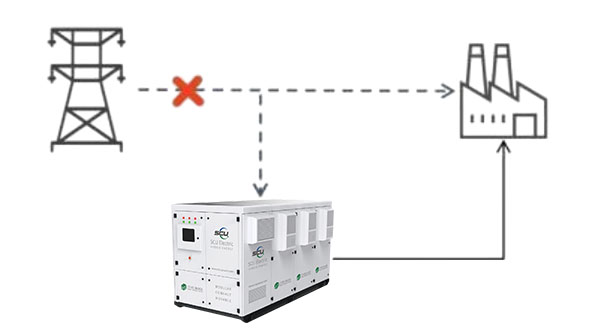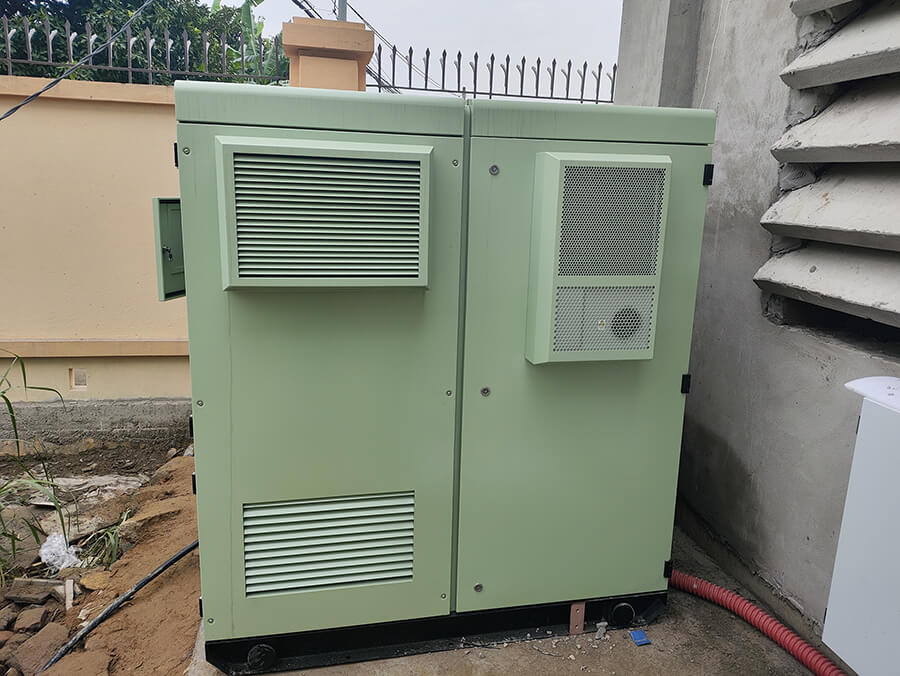Transformation of military energy demand: from dependence on supply to autonomous control
In modern military operations, the stability, environmental friendliness, and anti-destruction of energy supply have become core strategic capabilities. Traditional diesel generators rely on fuel supply, which is easy to expose targets and difficult to adapt to complex environments; grid power supply faces the risk of interruption. Battery energy storage technology is gradually becoming an important support for the military energy system with its flexible deployment, rapid response and clean characteristics.
Soalr energy storage system can achieve the following basic goals:
- Environmental friendliness: reduce the frequency of diesel engine use and reduce environmental pollution;
- Reliability: When the grid is interrupted, key equipment continues to supply power for ≥72 hours;
- Intelligence: fully automatic energy scheduling, reducing manual intervention.

SCU solution: solar energy storage system
System configuration:
Photovoltaic: 70kWp solar photovoltaic panel;
Energy storage system: GRES, 75kWh lithium iron phosphate battery + 50kW bidirectional PCS;
Intelligent EMS: encrypted communication, support multi-level load priority management.
Core working mode:
1. Normal operation (normal power grid)
Load-graded power supply:
- Priority load: Solar energy + energy storage combined power supply;
- Secondary load: Solar energy is given priority for power supply, and the power grid supplements it when it is insufficient.
Intelligent charging and discharging strategy:
During the day, the photovoltaic surplus power is used to charge the battery, and it is discharged to 20% SOC at night;

2. Grid abnormality
Automatically switch to off-grid mode when the grid is abnormal or interrupted to ensure the power supply of important loads.
Photovoltaic power-limited operation: Dynamically match load demand to avoid energy waste.
3. Excess energy processing
When photovoltaic power generation exceeds the load demand and the battery is full, the photovoltaic output power is automatically limited, and reverse feeding is prohibited to prevent the grid
Reverse interference.

Advantages and development trends of battery energy storage systems in the military field
1.Improved concealment and anti-destruction
- Silent power supply: The operating noise of the energy storage system is less than 45dB. With low-reflection photovoltaic components, it can greatly reduce thermal signals and acoustic characteristics to avoid satellite reconnaissance and enemy detection.
- Grid outage emergency: When the main grid is destroyed, the energy storage system can seamlessly switch to off-grid mode, providing ≥72 hours of power for key loads such as communication equipment and radar stations to ensure that the chain of command is uninterrupted.
- Adapt to harsh environments: Wide temperature range operation and high protection level can adapt to harsh environments.
2. Long-term energy storage and energy autonomy
- Large-capacity battery cell technology: Industry trends show that 500Ah+ large-capacity batteries can increase the energy storage of a single system to more than 6MWh, meeting the multi-day electricity demand of military bases. The cycle life of SCU’s lithium iron phosphate battery pack exceeds 6,000 times, supporting long-term deployment.
- Solar and battery storage synergy: The design of matching the average daily photovoltaic power generation and energy storage capacity can reduce diesel dependence, reduce CO₂ emissions by more than 100 tons per year, and take into account environmental protection and concealment.
3. Intelligent and safe upgrades
- AI early warning system: Through the integration of BMS (battery management system) and AI algorithm, the battery health status is monitored in real time, early fault warning (false alarm rate <0.01%) is achieved, and the risk of fire is reduced.
- Anti-electromagnetic interference design: EMP (electromagnetic pulse) shielding technology is used to resist electronic warfare attacks and ensure the stability of communication equipment in complex electromagnetic environments.
4. Modularization and rapid deployment
- Containerized integration: The energy storage system supports plug-and-play, base deployment can be completed within a few hours, and supports multi-machine parallel expansion, adapting to mobile command posts or temporary combat centers.
- Standardized interface: Compatible with multiple energy inputs (photovoltaic, wind power, diesel engines), realizing hybrid power supply mode, and improving battlefield adaptability.
New energy technology empowers military defense
Energy storage technology is not only the carrier of the energy revolution but also the “silent guard” of modern national defense. The energy storage system provides cost-effective energy solutions for the military field-from reducing the risk of fuel fleets to improving battlefield survivability, every step of innovation is driving the national defense energy system to evolve towards green, intelligent, and resilient. In the future, with breakthroughs in technologies such as long-term energy storage and solid-state batteries, energy storage will become a key puzzle of military strategic capabilities.
